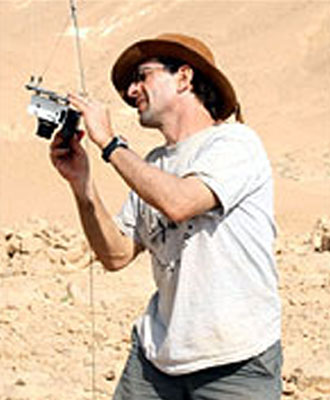Abstract
During the first Jewish revolt against the Romans (66 of the common era {C.E.} to 70 C.E.), Yavne was captured by the soon to be Roman Emperor Vespasian. It is during this time period that a particular event projects Yavne into a prominent position in modern Jewish history and that of western civilization. In 70 C.E., in the final desperate days of the Roman siege of Jerusalem, Rabbi Yohanan Ben Zakkai was smuggled out of the city in a coffin. Escorted to the Roman city of Yavne and the palace of Vespasian, Rabbi Yohanan pleaded for a center of Jewish learning to be established in Yavne to replace that of Jerusalem, which was about to be systematically demolished by the Roman Tenth Legion. Vespasian granted Rabbi Yohanan's request, and the Yeshiva of Yavne flourished for 60 years. In replacing Jerusalem as a center of Jewish law and culture, Yavne resucued much of what was Jewish learning up until the destruction of Jerusalem and the temple in Jerusalem.
A "tel" is a mound or hill built from the rubble of the destruction layers of successive civilizations. Tel Yavne in Israel is the site of the ancient city of Yavne. Located about 20 kilometers south of Tel Aviv, and about 8 km inland from the ancient seaport of Yavne Yam (meaning Yavne by the Sea), it is believed that underneath the tel are the remains of more than 5,000 years of continuous occupation. The tel, at 4 hectares in area and approximately 30 m in elevation, is relatively large in comparison to other ancient sites in Israel. Until 2005, no excavations had been carried out at the site. In preparation for excavation work, electrical resistivity tomography (ERT, also known as 2-D resistivity) surveys, ground penetrating radar surveys, and low altitude photography from kites and balloons were carried out at the site. This talk will discuss the ERT and photographic surveys. The objectives of these two surveys were to delineate the plan view and vertical extent of accumulated cultural debris, and to identify particular areas for initial test pitting by archaeologists. 21 ERT cross-sections were imaged, ranging in length from 80 m to 140 m. Approximately 1000 low altitude, large format photographs were shot from kites and weather balloons. Specific features possibly identified include a 9th century B.C.E. (before the common era) water system, the Philistine city wall dating from 790 B.C.E., the ruins of a 12th century C.E. Crusader castle, and numerous architectural features from the Mameluke, Ottoman, and Palestinian periods of habitation. Exploration for the Sanhedrin will be discussed. Geophysical data from other archaeological analogues and related sites, including the Western Wall in Jerusalem, will be discussed. This is the first time that non destructive techniques have been used in the first phase of an archaeological exploration program in Israel at such an important, well recognised ancient site.
Biography
Paul Bauman has lectured about various achaeogeophysical adventures at universities, museums, and research institutions in North America, Europe, and the Middle East. Aspects of his archaeogeophysical work have been the subject of a NOVA DOCUMENTARY (Ancient Refuge in the Holy Land), CBC interviews, and numerous newspaper and magazine articles including in Time and National Geographic. Paul is presently providing geophysical and photographic support to an Italian/American archaeological study attempting to find evidence for one of the iconic Biblical events for which no physical evidence has yet been found – the Exodus from Egypt and the receiving of the Ten Commandments at Mount Sinai.
Paul is a Professional Geophysicist and Engineer with over 20 years of geophysical exploration experience in the environmental, water resource, mining, oil and gas, and archaeology sectors. Paul has a B.Sc.E. in Geological Engineering from Princeton University, a minor in Near Eastern Studies also from Princeton, and an M.Sc. from the University of Waterloo in hydrogeology. He worked for Schlumberger International from 1981 to 1986 in remote locations in Borneo and Papua New Guinea. In 1990, Paul created and has since managed the near surface geophysics group at Komex International Ltd. This group numbers about 20 geophysicists and has worked on every continent in the world.





